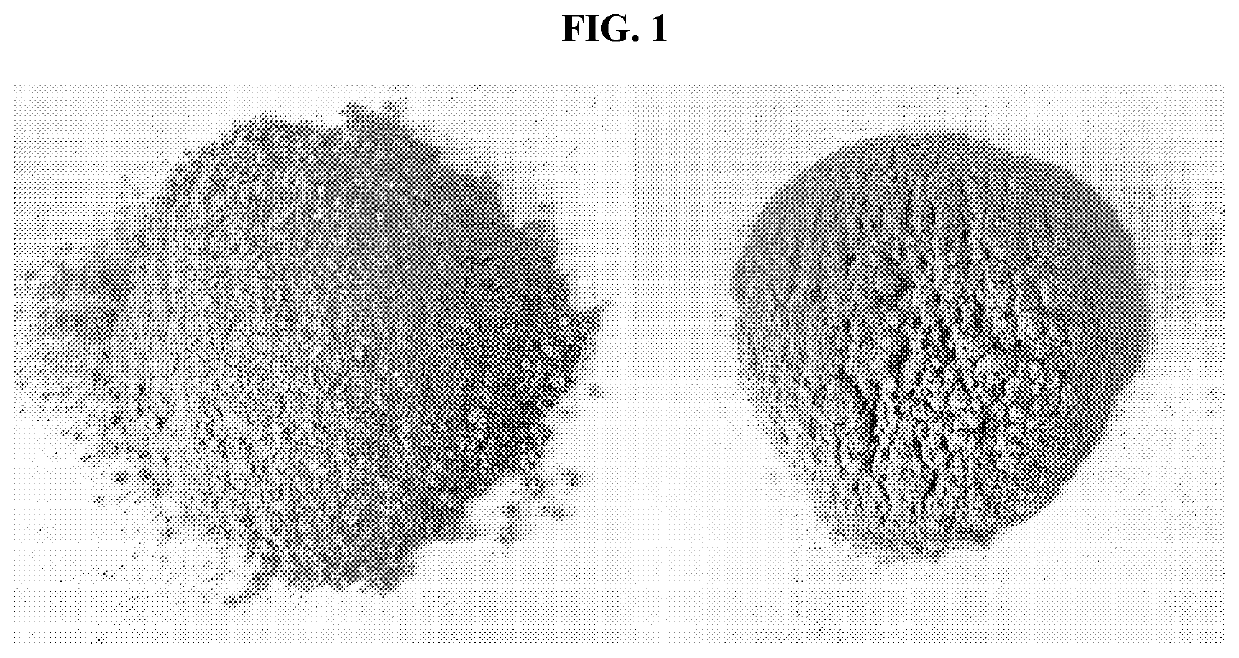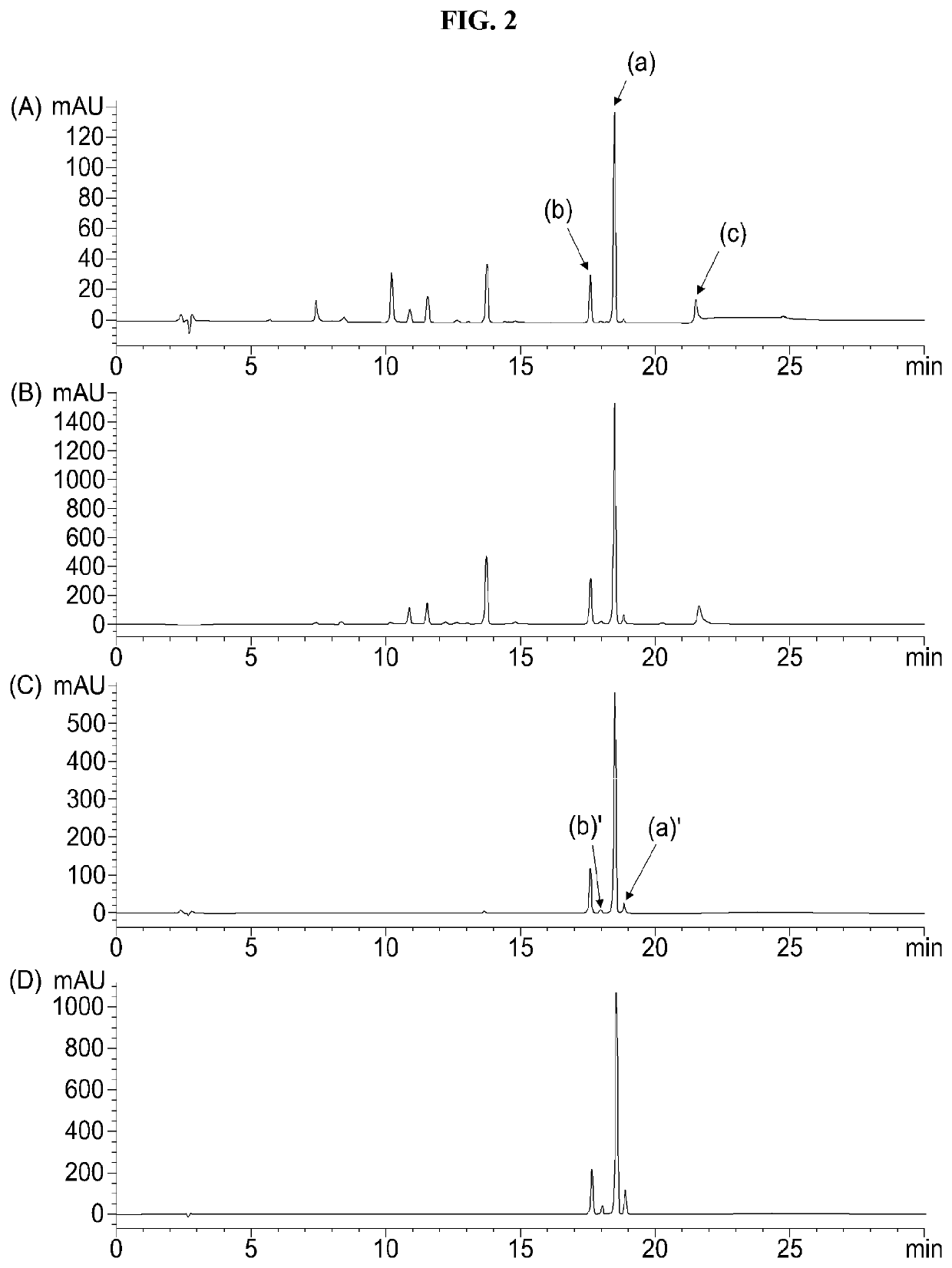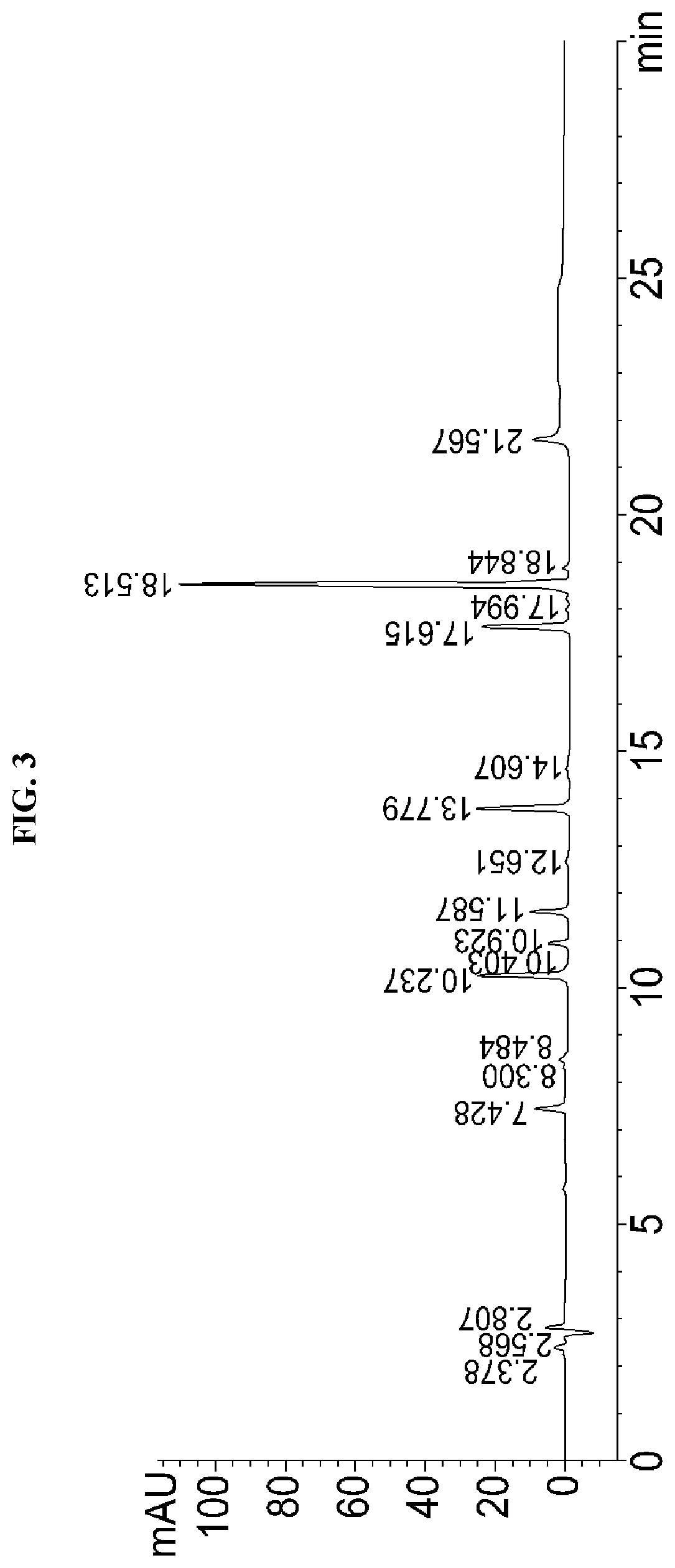Method for long-term storage of chlorophyll-containing extract
a chlorophyll and extract technology, applied in the field of chlorophyll long-term storage, can solve the problems of not being suitable for commercial use, using solvents, complex and long processing of chlorophyll, etc., and achieve the effects of long-term stability, increased light blocking, and stable storag
- Summary
- Abstract
- Description
- Claims
- Application Information
AI Technical Summary
Benefits of technology
Problems solved by technology
Method used
Image
Examples
example 1
ical Extraction Step
[0119]50 g of freeze-dried wheatgrass powder (Dreams, South Korea) was extracted for 60 minutes under the conditions of 350 bar, 50° C., and a supercritical carbon dioxide flow rate of 60 ml / min to remove impurities, and then re-extracted for 120 minutes under the conditions of 350 bar, 50° C., a supercritical carbon dioxide flow rate of 60 mf / min, and a co-solvent ethanol flow rate of 5 ml / min to analyze the content of chlorophyll a. According to the analysis result, the amount of chlorophyll a was 235 mg, and the mass of total solids remaining after ethanol was removed by vacuum distillation was confirmed to be 4250 mg.
preparation example 1
purity Removal Step
[0120]50 g of freeze-dried wheatgrass powder (Dreams, South Korea) and 2.5 g of grapeseed oil as shown in (A) of FIG. 1 were mixed well with a mixer to be prepared. The prepared mixture of wheatgrass and grapeseed oil was extracted for 120 minutes under the conditions of 350 bar, 50° C., and a supercritical carbon dioxide flow rate of 60 mf / min to obtain wheatgrass powder with improved clarity of green color by removing impurities as shown in (B) of FIG. 1.
example 2
on Example 1+Example 1
[0122]The content of chlorophyll a obtained through the step of Example 1 was analyzed with respect to the wheatgrass powder obtained through the steps of Preparation Example 1. According to the analysis result, the amount of chlorophyll a was 240 mg, and the mass of total solids remaining after ethanol was removed by vacuum distillation was confirmed to be 3116 mg.
[0123]The result of converting the amount of chlorophyll a analyzed in each of Comparative Examples 1 and 2 and Examples 1 and 2 with respect to 1 g of dry wheatgrass powder and the extraction efficiency (=mass of chlorophyll a / mass of total solids) are shown in Table 1 below. Also, the results of high-performance liquid chromatography of each thereof are shown in FIG. 2.
TABLE 1ComparativeComparativeWheatgrass powderExample 1Example 1Example 2Example 2Chlorophyll (mg)3.84.74.24.8Extraction2.35.54.87.2efficiency (%)
[0124]According to FIG. 2 above, a characteristic peak of chlorophyll b and a character...
PUM
| Property | Measurement | Unit |
|---|---|---|
| total flow rate | aaaaa | aaaaa |
| flow rate | aaaaa | aaaaa |
| temperature | aaaaa | aaaaa |
Abstract
Description
Claims
Application Information
 Login to View More
Login to View More - R&D
- Intellectual Property
- Life Sciences
- Materials
- Tech Scout
- Unparalleled Data Quality
- Higher Quality Content
- 60% Fewer Hallucinations
Browse by: Latest US Patents, China's latest patents, Technical Efficacy Thesaurus, Application Domain, Technology Topic, Popular Technical Reports.
© 2025 PatSnap. All rights reserved.Legal|Privacy policy|Modern Slavery Act Transparency Statement|Sitemap|About US| Contact US: help@patsnap.com



